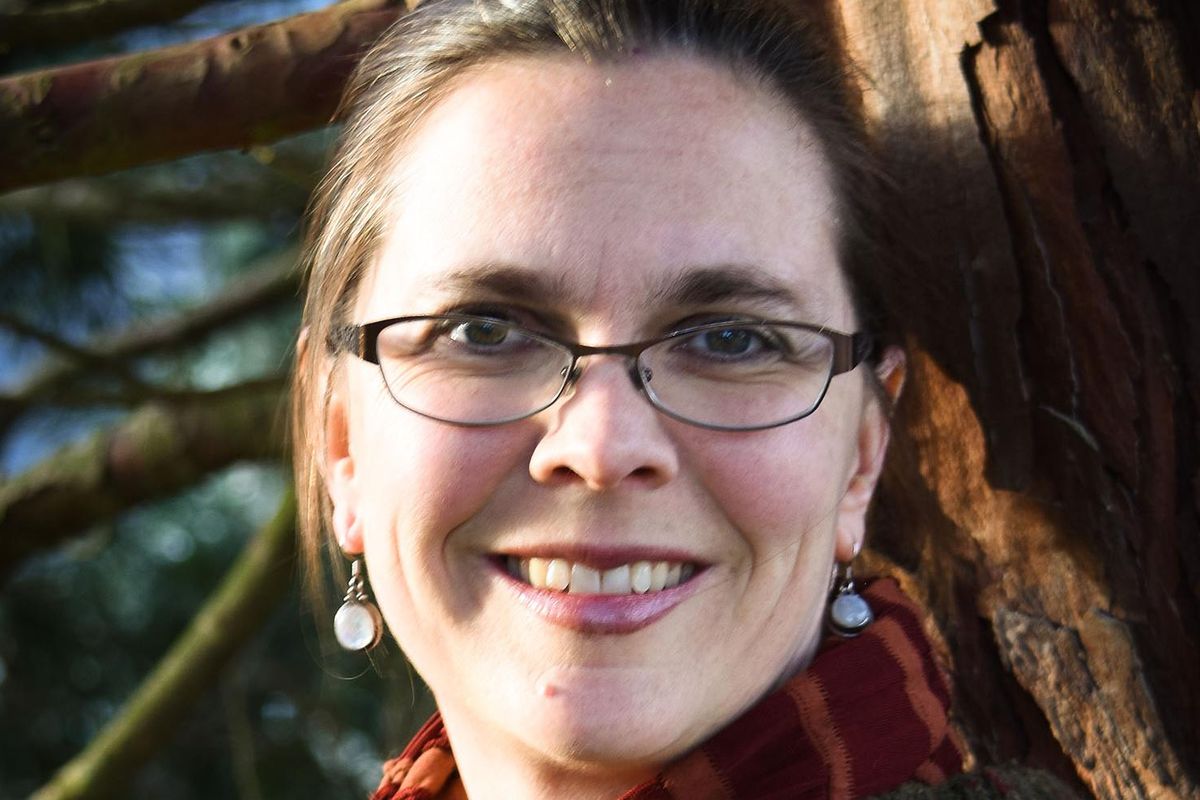‘Blackfish Prophecy’ spurred by whale of a tale

The Beluga whale swam to the edge of the tank and peered at Rachel Clark through the glass. Clark slowly nodded. The whale nodded back.
She waved her arm. The whale waved its flipper. She spun around in a circle. The whale swam in a circle.
“It was incredible,” said Clark. “You could tell someone was there. It touched my heart and deeply affected me.”
That encounter occurred when Clark was the first marine mammal intern at the National Aquarium in Baltimore.
An experience with killer whales in the wild at San Juan Island cemented her fascination.
“I sat on the rocks and the whales moved right by me. I could smell the whales’ breath,” she said. “I’m smitten with whales.”
Two decades later those initial experiences resonated as she wrote her first novel, “The Blackfish Prophecy” (Booktrope, 2016).
Targeted to a young adult audience and illustrated by Karen Savory, the book tells the story of three teens, Terra, Tiluk and Miles. Terra, the daughter of killer whale biologists, feels a special kinship with the whales. Tiluk is her best friend whose father is Native American. Miles is a troubled teen who connects with the two friends after witnessing a captive orca brutally kill his trainer at a marine amusement park. They soon discover they are more linked to each other – and to the whales – than they ever imagined.
Driven to connect with the highly evolved consciousness of the orca, the teens take extraordinary risks to challenge big business and renew lost traditions. Their journey is set to restore an ancient mystical bond between humans and whales that ultimately reveals The Blackfish Prophecy.
Clark has worked as a science writer for many years, and lives in Moscow, Idaho, with her two sons. In 2012, a dream awakened the story that had long simmered in her mind and heart.
In her dream, she and her sons stand on a shallow, pebbly Puget Sound beach and a female killer whale slides up next to them.
“I had a feeling of great joy,” she said. “I woke up and wrote it down.”
A few weeks later she came across a book at the library with a picture of a killer whale on the cover. It was “Death at SeaWorld: Shamu and the Dark Side of Killer Whales in Captivity,” by David Kirby.
“I couldn’t put it down,” Clark said. The book, coupled with her dream, prompted her to begin writing “The Blackfish Prophecy.”
“I finished it less than three months later,” she said. “It didn’t feel like it was my story – it felt like something else was coming through.”
Clark wove one of her heroes, Jane Goodall, into the tale, and sent Goodall an advance review copy. The noted British primatologist replied in part, “When I began to read, I was absolutely captivated. A marvelous story and I love the spiritual aspect.”
The endorsement thrilled Clark. “To get her approval, her blessing, was one of the most amazing moments of my life!”
“The Blackfish Prophecy” is the first in a planned five-book series titled “Terra Incognita and the Great Transition.”
She describes the Great Transition as the “move from a domination-based paradigm to a partnership-based paradigm.”
Clark believes that transition is currently unfolding.
“There’s a rising tide of empathy,” she said. “We are made of stardust and we are much more related to each other than we aren’t. That’s what’s shifting our culture to a collaborative healing process.”
When asked what she learned while writing “The Blackfish Prophecy,” Clark said, “I learned I should be writing novels! It’s an absolute joy for me to be there for the stories that want to come through.”
She feels her life experiences, her science background, her affinity with whales, have all come together in the writing process.
And that mystical bond between humans and whales?
“I absolutely believe in that bond. People love these beings in a deep and profound way.”